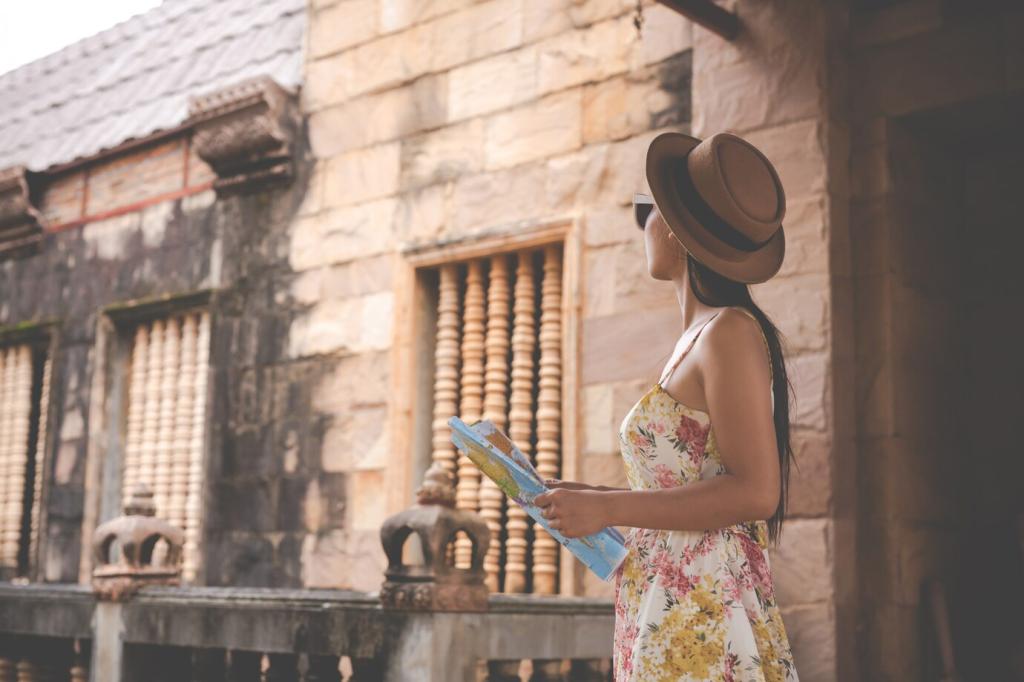Iconic City Skylines: Steel, Glass, and Stories Above the Streets
Today’s chosen theme: Iconic City Skylines. Step onto the world’s grandest balconies as we explore silhouettes that define cities, memories that cling to horizons, and practical ways you can experience, photograph, and interpret these unforgettable urban crowns.
From Low Rise to Landmarks: The Evolution of Iconic City Skylines
Where Skyscrapers Began
The race upward started with steel frames and elevators transforming city cores. Chicago’s Home Insurance Building changed expectations, while New York’s Chrysler and Empire State Buildings crowned the Art Deco era with glittering setbacks and triumphant spires.
Innovation That Lifted the Horizon
Elevators, curtain walls, and wind-taming tricks redrew the skyline. Taipei 101’s tuned mass damper, the Burj Khalifa’s buttressed core, and Shanghai Tower’s double-skin façade embody how engineering solutions become visual signatures in iconic city skylines.
A Skyline Memory, Etched in Light
I first saw Manhattan’s skyline from the ferry at sunrise—steam rising, gulls circling, towers glowing like hot coals. That moment taught me skylines aren’t just shapes; they’re emotional maps we carry everywhere we go.
How to Read a Skyline: Architecture as a City’s Signature
Look for eras layered in outlines: domes and spires, Art Deco setbacks, International Style boxes, postmodern crowns, and today’s aerodynamic supertalls. Each profile quietly timestamps the economic cycles and aesthetic priorities of its city.
How to Read a Skyline: Architecture as a City’s Signature
Design metaphors shape iconic city skylines. Hong Kong’s Bank of China suggests bamboo’s resilience; London’s Shard recalls steeples and masts. These references anchor modern towers to local memory, turning height into cultural resonance rather than pure spectacle.
How to Read a Skyline: Architecture as a City’s Signature
Dubai’s needlelike altitude reads differently from Hong Kong’s compact mountain of towers, while Paris balances low rooflines with a cluster at La Défense. Understanding these contrasts helps you compare character without ranking cities purely by height.
Best Vantage Points for Iconic City Skylines
Classic, Can’t-Miss Views
Stand on Brooklyn Heights Promenade facing lower Manhattan, ride Hong Kong’s Peak Tram for a harbor panorama, or stroll Shanghai’s Bund to watch Pudong ignite at dusk. Each view frames an unforgettable chapter of the city’s identity.
Golden and Blue Hour Timing
Plan shots when sun and city harmonize. Golden hour softens glass and stone, while blue hour turns offices into constellations. Use sunrise for calmer streets, clear air, and reflections that whisper rather than shout across the water.
Practical Comforts and Etiquette
Pack layers for wind on observation decks, check tripod rules, and respect no-drone zones. Transit passes save time, portable batteries save nights, and a thermos of tea turns chilly waits into small, steady acts of joy.
Photographing Iconic City Skylines
Pair a wide lens with strong foreground lines—rails, riverwalls, or rooftops—to lead eyes toward the skyline. Then switch to a telephoto to compress distances, stack towers elegantly, and isolate the crowns that define a city’s heartbeat.
Sustainable Skylines: Tomorrow’s Icons
Double-skin façades, shade fins, and natural ventilation reduce energy while creating distinctive silhouettes. Shanghai Tower’s twist tames wind, and Singapore’s Oasia Hotel turns greenery into architecture, proving sustainability can literally change the skyline’s outline.

Join our mailing list
